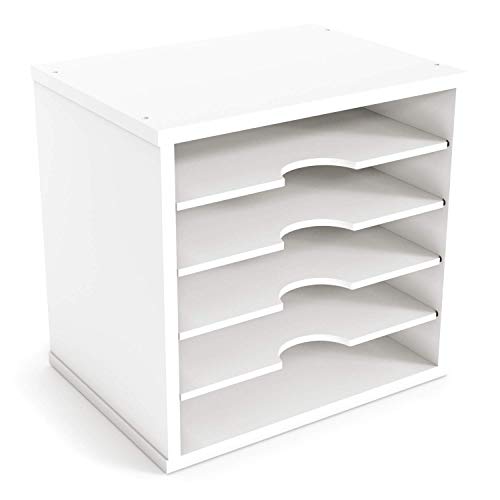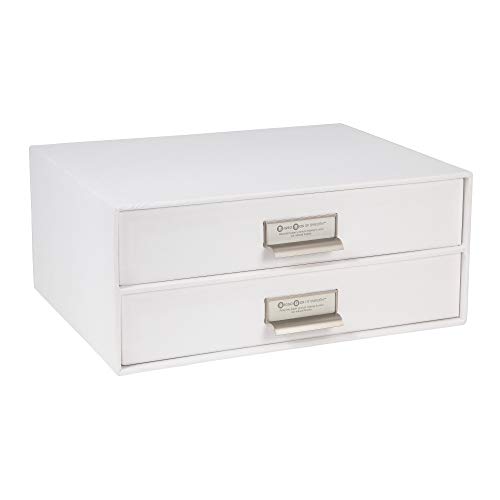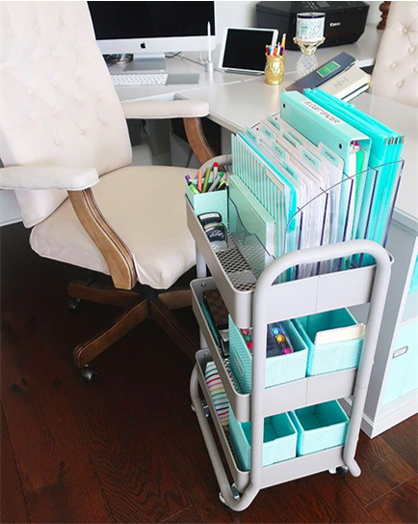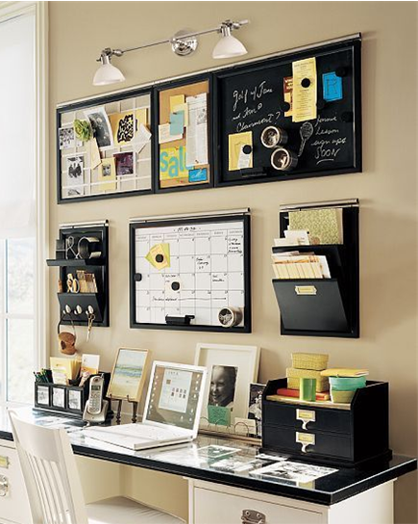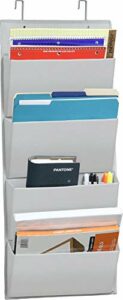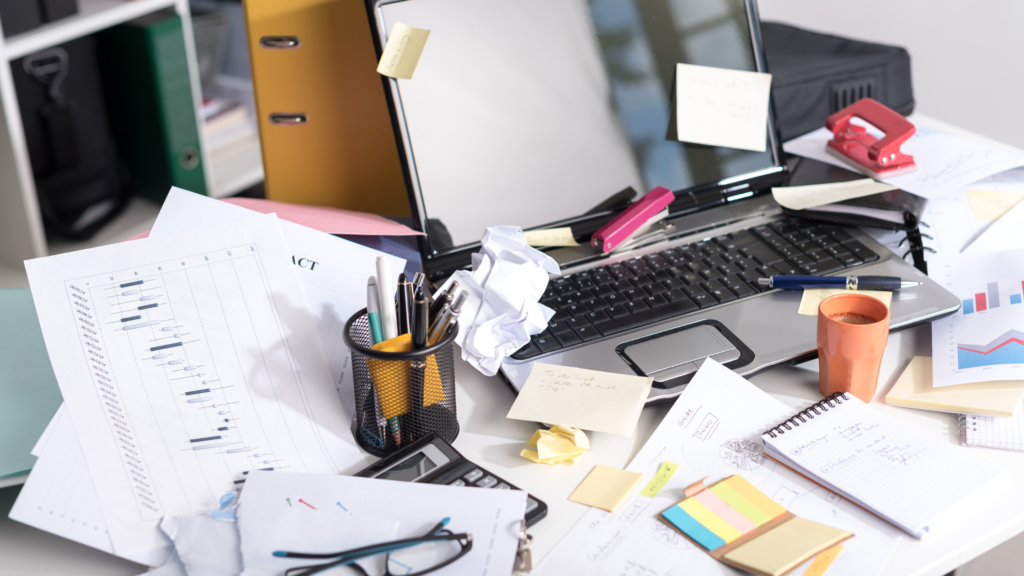
Did you know the average person spends 1-1.5 hours a day searching for things on their desk? These are things that are within reach that you need but can’t put your hands on!
Let's organize your desk/work area in a way that WORKS for you, and LASTS!
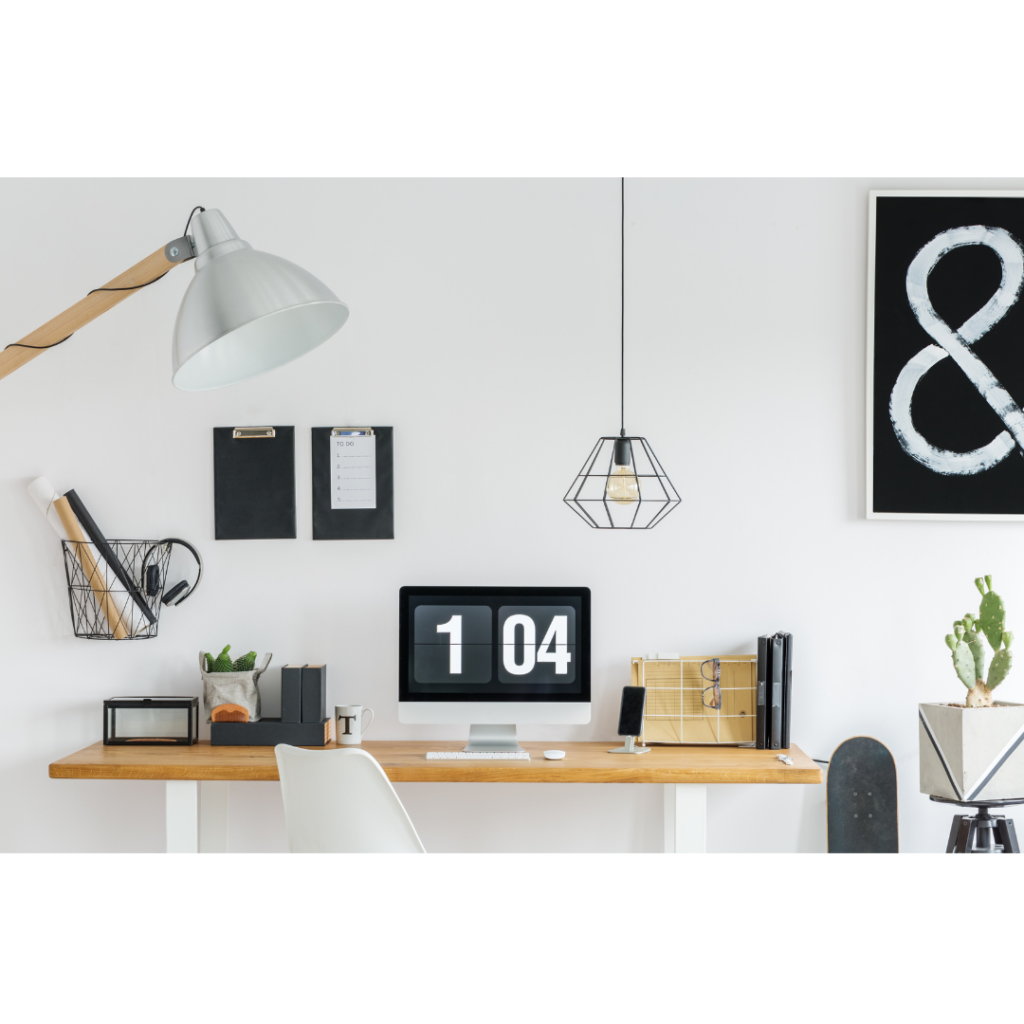
Categorize the items in and around your desk:
Sort everything in order of importance: high, medium and low.
- High importance items are your “touch access items”. These are things you need to access quickly and often. They need to be at your fingertips.
- Medium importance items are things that are important for you to have nearby, but not needed often, and don’t need to be front and center.
- Low importance items are things you rarely need.
*Pay attention to the things that are left – these may be things you don’t actually need in or around your desk at all. Make sure everything in your work space is necessary.
Prioritize the space on your desk:
- The top of your desk is the most important area, and should be reserved for your workspace, and your touch access items. If your desk is large, you may have room for some other mid-level important items, but ideally, you want to keep the top of your desk open for just work space and your most important items. Limiting the things that go on top of your desk is priority #1, and will go a long way to making your organization efforts successful!
- The rest of your desk will depend on what kind of desk/storage you have, and how many important things need to be stored. Top drawers are probably the next most important area since they are the next most convenient spaces.
- If you still have items that are important to have at your work space, but you don’t have any more storage space, now it’s time to get creative with systems and unused space.
*This is a good time to assess your desk and office furniture to see if it meets your storage and work area needs. It may be that you’ve had trouble keeping your desk organized because it’s too small, or doesn’t offer the storage you need.
Know yourself, your needs and how you work:
Before you go out and buy any systems or storage solutions, do some inward introspection and think about YOU and how you work. Think about your routines, habits, work flow, etc. Knowing your habits up front, and working with them as you set up your work area will help you be successful in keeping your office organized.
For example, papers are one of the biggest organization pain points in an office. If you are a natural piler but trying to force yourself to file papers, it’s probably not working out very well. Choose a piler organization system to keep your area organized while working with your habits. Below are some good piler options for organizing papers.
Choose systems that meet your needs:
Along the lines of knowing yourself above, it’s important to find systems for storing your items that give you the function you need, but also work with your habits and are easy to use. If a system isn’t easy for you to use, you won’t use it. It’s as simple as that.
There are tons of drawer organization systems, desktop storage options, etc out there. Think about your items, your habits/routines, and the flow of your work day. Choose the system that best fits those needs. It’s a little bit of trial and error here as well, so the first system you choose may not be the right one. Don’t give up. Keep working and searching until you find the right one for you!
Look for unused space you can take advantage of:
Evaluate the important items that need to be on or near your desk. Rather than crowd your work space, look for other areas to use that still offer accessibility.
- Wall space – The wall space above your desk offers more space than people realize. It’s a great place to add shelves, store files and utensils, etc.
- Rolling cart – Incorporating a rolling cart offers lots of extra space and flexibility all in one. You can roll the cart to your desk when you need it, but roll it out of the way when you don’t.
- Door space – The back of a door is a great space to take advantage of, and there are tons of “over the door” systems out there to fit your needs.
Schedule time for maintenance:
This is the step most people forget about or skip. But unfortunately, if you don’t take time to maintain and “reset” your desk space, all the systems in the world will fail every time. Part of using a system is actually putting things back where they belong.
Here’s where you figure out what works for you. You can either do less maintenance more often, or more maintenance less often. Maybe you prefer to take 10 minutes to clean up your desk so you can start the next day with a fresh work space. Or maybe you prefer to take care of all your papers, etc on Sundays before the start of a new work week. Whatever you choose, schedule it on your calendar, and make it non-negotiable time, like dentist appointments and ballet recitals.
By taking the time you need to evaluate yourself, your work space and your needs, you will certainly find a system that give you the function and efficiency you’ve been lacking. And by taking the time to maintain your space, you will ensure your systems will continue to function, and you will literally give yourself back time in your day! Can you think of something to do with that extra 1-1.5 hours a day?? I know I can!
If you need more help organizing your office, please contact me! I’m here to help!
Happy Organizing!!
lisa
*Visit my website for more office product suggestions and organization solutions

